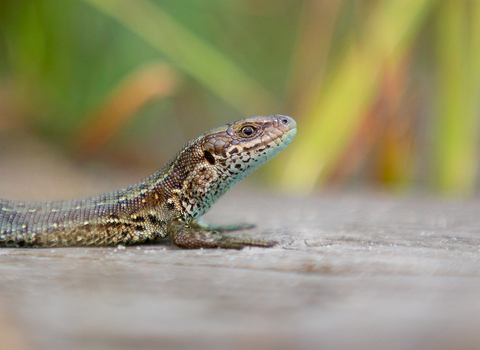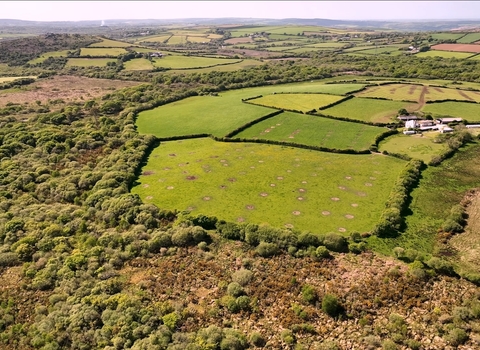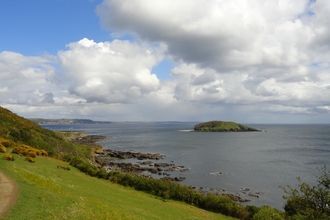With buzzing hedgerows, colourful butterflies, basking lizards, and incredible glow worms, July is an amazing time to be out looking for wildlife in Cornwall. Make use of the warm days and long summer evenings to add a few new species to your spotter's list.
Here are some of July's best wildlife species and spectacles to see.
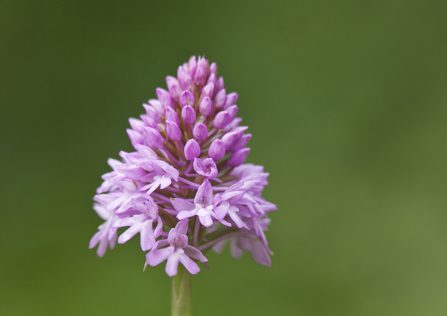
Pyramidal orchid. Image Guy Edwardes
Pyramidal Orchids
July is a great month to visit your local sand dunes, where you can see a wide spectrum of colour from a vast array of flowers. Perhaps the grandest is the pyramidal orchid, with its luminous pink heads which are often quite conical in shape (particularly when the highest florets haven’t quite opened). Each of its tightly-packed florets has three long, equal lobes hanging from it, making it distinctly different from the Southern Marsh-orchid which is also flowering at this time.
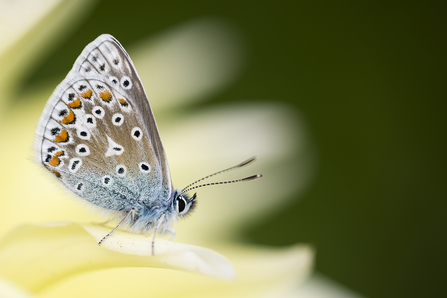
Silver Studded Blue Butterfly. Image Ben Watkins
A sea of blue
Cornwall is a stronghold for the silver-studded blue, a butterfly which has seen a heavy decline elsewhere in the country. Visit our Upton Towans Nature Reserve this month and you may be blessed with clouds of Silver-studded Blue, flying low over the dune grassland. They have a symbiotic relationship with ants, which care for the caterpillars and guard them right up until the adult spreads its wings and takes its maiden flight.
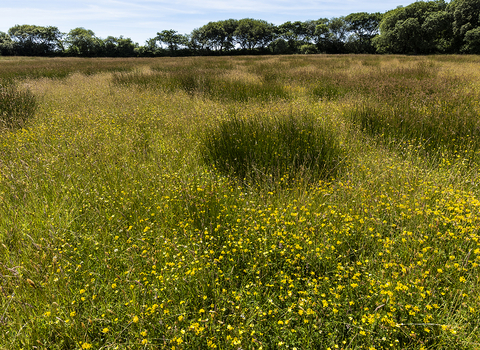
Greena Moor Landscape. Image Ben Watkins
Greena Moor
Nestled in northern Cornwall lies Greena Moor nature reserve – known for its internationally rare culm grassland that is filled with hidden wildlife at this time of year. Among the rushes and tussocks you will find many flowers that have adapted to the wet climate here, such as devil’s-bit scabious and the heath spotted-orchid. East Cornwall also boats the duchy’s population of marbled whites. Look out for the striking black-and-white checks of this butterfly from June to August.
Common Lizard - near Lostwithiel. Image Laura Snell
Common lizard
Also known as the viviparous lizard (meaning they do not lay eggs), common lizards give birth to live young at this time of year. As there are so many more around, it’s a great time to go looking for them. On warm days you can find the lizards basking on rocks or patches of bare ground in heathland, grassland or coast paths. They will also bask on south-facing Cornish hedges, where the stones are exposed, but they will quickly scamper away if your shadow passes over them.
Glow worms at Gwithian Towans. Image Andy Nelson
Glow worms
Go for a walk on the dunes on a dark, moonless night and you may be lucky enough to spot the bioluminescence of a female glow-worm. She is a beetle, but she looks nothing like one, and emits the glow from her rear end. She is trying to attract a male, which is smaller but fully-winged so looks far more beetle-like. During the day, you may also come across a glow-worm larva, which looks very similar to the female and hunts for slugs and snails.
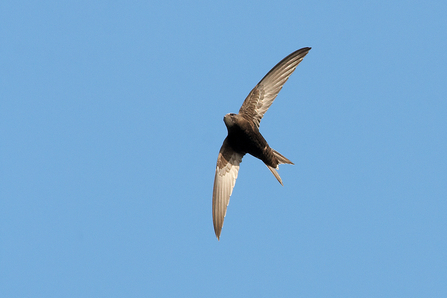
©Stefan Johansson
Swifts
July is a wonderful time to watch swifts circling the air and screeching as they feast on small flying insects which they feed on in flight. They spend most of their lives soaring high in the sky, only ever landing to nest. Swifts are easy to spot as they look like an arrow whirling through the sky, and often fly in groups.
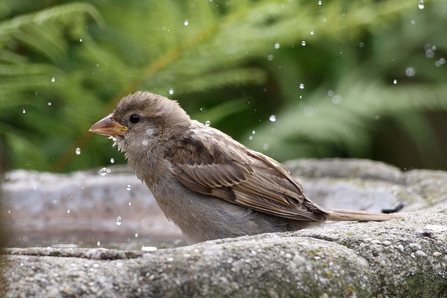
House sparrow bathing by Margaret Holland
Take action
As temperatures soar and we revel in the summer sun, our local wildlife may struggle in the scorching heat. Please remember to provide plenty of water for wildlife in your garden or outdoor space. It’s certain to be used by one animal or another – from to hedgehogs to birds and even butterflies that rely on shallow puddles and wet soil to get the minerals they need.
Summer Blogs
Curious about what else can be found this season? Dive deeper into the topic of summer wildlife with our blogs below.

